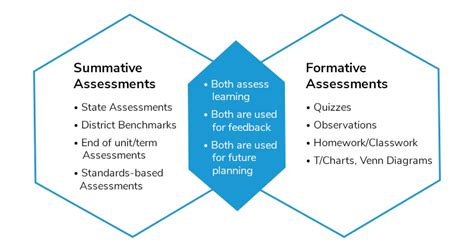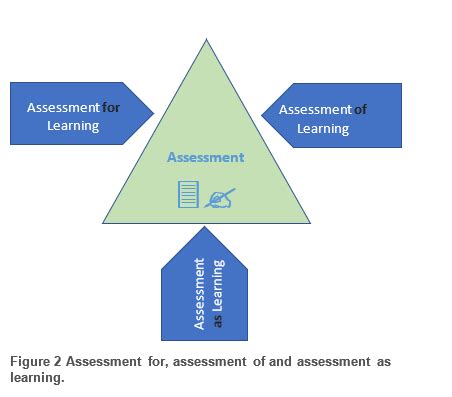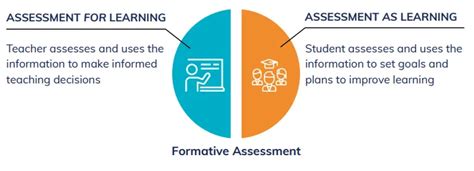Formative assessment is a critical component in the educational process, offering real-time insights into student learning and progress. Unlike summative assessments, which evaluate student performance at the end of an instructional period, formative assessments are designed to provide ongoing feedback that helps shape teaching and learning. This article delves into the key concepts of formative assessment, exploring its definition, purpose, and the essential characteristics that make it effective. We’ll discuss various techniques, the benefits for both students and teachers, and practical strategies for implementation. Additionally, we will address common challenges and provide solutions to enhance your formative assessment practices.
Discover more about this topic with gameshoek.com in detail.
1. Definition and Purpose of Formative Assessment
Formative assessment refers to a range of evaluation techniques used by educators to monitor student learning and provide ongoing feedback during the instructional process. Its primary purpose is to inform both teaching and learning, helping educators adjust their methods and approaches based on real-time data. Unlike summative assessments, which are used to evaluate student learning at the end of an instructional period, formative assessments are conducted throughout the learning process. They aim to gauge students’ understanding, identify learning gaps, and guide instructional decisions to improve student outcomes.
Formative assessments can take various forms, including quizzes, observations, discussions, and peer assessments. The goal is to provide continuous feedback that allows students to reflect on their learning and make necessary improvements before the final evaluation. By focusing on the process of learning rather than just the end result, formative assessments foster a supportive learning environment where students are encouraged to engage actively with the material. This ongoing feedback loop helps educators tailor their teaching strategies to meet the diverse needs of their students, ultimately enhancing the overall educational experience and promoting greater academic achievement.

2. Difference Between Formative and Summative Assessment
Formative and summative assessments serve distinct purposes in the educational process, each playing a unique role in evaluating student progress. Formative assessment is conducted during the learning process and focuses on providing ongoing feedback to students and educators. Its main goal is to monitor and improve student understanding and to inform instructional adjustments. Examples include quizzes, class discussions, and observational assessments, which help identify learning gaps and guide immediate instructional strategies.
In contrast, summative assessment occurs at the end of an instructional period, such as a unit, semester, or course. It aims to evaluate and summarize student learning and performance based on specific criteria or standards. Summative assessments are often high-stakes, including final exams, standardized tests, and end-of-term projects. These assessments provide a comprehensive overview of what students have learned and are used for grading and reporting purposes.
While formative assessments are diagnostic and iterative, summative assessments are evaluative and conclusive. Formative assessments help in understanding and improving student learning continuously, whereas summative assessments offer a final judgment of student achievement. Both types of assessments are crucial in the educational process, but they address different aspects of learning and instructional effectiveness.

3. Key Characteristics of Effective Formative Assessments
Effective formative assessments share several key characteristics that enhance their impact on student learning. Firstly, they provide timely feedback, allowing students to understand their progress and make adjustments while the material is still fresh. Secondly, they are ongoing and integrated into daily instruction, rather than being isolated events, which helps in continuously monitoring and supporting student development.
Another crucial characteristic is their ability to be varied and flexible, using diverse methods such as quizzes, observations, and discussions to cater to different learning styles and needs. Effective formative assessments also promote student involvement by encouraging self-assessment and peer feedback, which fosters a deeper understanding of the material. Additionally, they are clear and aligned with learning objectives, ensuring that both students and teachers understand the goals and criteria for success. These characteristics collectively help in creating a responsive and supportive learning environment that drives student growth and achievement.

4. Types of Formative Assessment Techniques
Formative assessment techniques come in various forms, each tailored to different aspects of student learning and engagement. One common technique is the use of quizzes and polls, which provide quick snapshots of student understanding and can be administered frequently to gauge progress. Another technique is observational assessments, where educators watch and interact with students during activities, noting their responses and engagement levels to identify areas needing support.
Classroom discussions and think-pair-share activities are also effective formative assessment methods. These techniques encourage students to articulate their understanding and collaborate with peers, providing teachers with insights into their comprehension and thought processes. Exit tickets, where students answer a question or summarize what they’ve learned before leaving class, offer immediate feedback on their grasp of the day’s material.
Peer assessments involve students evaluating each other’s work, which promotes critical thinking and self-reflection. Self-assessments, where students reflect on their own learning and set goals for improvement, help them take ownership of their progress. Additionally, digital tools and platforms can be used for interactive assessments, such as online quizzes and response systems, allowing for real-time feedback and data collection.
Each of these techniques contributes to a comprehensive approach to formative assessment, helping educators tailor their instruction to meet student needs effectively.

5. Benefits of Formative Assessment for Students and Teachers
Formative assessment offers numerous benefits for both students and teachers, significantly enhancing the educational experience. For students, formative assessments provide continuous feedback that helps them understand their strengths and areas for improvement. This ongoing feedback supports self-regulation and motivation, as students can make adjustments to their learning strategies in real time. It also fosters a growth mindset, as students receive guidance and encouragement to improve rather than simply being evaluated at the end.
For teachers, formative assessments are invaluable in informing instructional practices. They offer insights into student comprehension and progress, allowing educators to adjust their teaching methods and materials to address specific learning needs. This responsive approach helps in targeting interventions and differentiating instruction effectively. Additionally, formative assessments help in building stronger teacher-student relationships, as they facilitate regular communication and understanding of individual student needs. Overall, formative assessments contribute to a more dynamic and supportive learning environment, leading to improved educational outcomes for both students and teachers.

6. Implementing Formative Assessment in the Classroom
Implementing formative assessment in the classroom involves several strategic steps to ensure its effectiveness. First, it’s crucial to establish clear learning objectives that align with the formative assessments. These objectives guide both the assessments and the feedback provided, ensuring that they are focused and relevant to the students’ learning goals.
Next, choose a variety of formative assessment techniques to cater to different learning styles and needs. Techniques such as quizzes, observations, discussions, and peer assessments can be integrated into daily lessons. It’s important to use these assessments regularly to gather ongoing feedback rather than relying on a single method.
Create a supportive environment where students feel comfortable sharing their thoughts and making mistakes. Encourage open dialogue and provide constructive feedback that helps students understand their errors and improve. Involve students in the assessment process by encouraging self-assessment and peer reviews, which promotes active engagement and self-reflection.
Additionally, use the data collected from formative assessments to adjust your teaching strategies. Analyze the feedback to identify common challenges and modify your instruction accordingly to address these areas.
Finally, communicate the purpose and benefits of formative assessments to students, helping them understand how these assessments contribute to their learning and development. This transparency fosters a positive learning environment where students are motivated to participate actively in their educational journey.

7. Tools and Resources for Formative Assessment
A variety of tools and resources are available to facilitate effective formative assessment in the classroom. Digital platforms like Google Forms and Kahoot! allow for the creation of quizzes and polls that provide immediate feedback to students. Learning management systems such as Canvas and Blackboard offer integrated tools for quizzes, discussions, and assignments that can track student progress over time.
Interactive tools like Socrative and Poll Everywhere enable real-time student engagement and instant feedback. For classroom observations and note-taking, apps like ClassDojo and Seesaw provide convenient ways to record and analyze student performance. Peer and self-assessment can be supported using tools like Rubrics and Reflection Journals, which help students evaluate their own and others’ work.
Additionally, educational websites and resources such as formativeassessment.com and the Assessment for Learning community offer valuable strategies, examples, and templates to enhance formative assessment practices. Utilizing these tools effectively can streamline the assessment process and provide valuable insights into student learning.

8. Challenges and Solutions in Formative Assessment Practices
Implementing formative assessment practices can present several challenges, but effective strategies can address these issues. One common challenge is ensuring consistent and meaningful feedback. Teachers may struggle to provide timely and specific feedback due to large class sizes or heavy workloads. To overcome this, educators can utilize digital tools that automate feedback and streamline assessment processes, allowing for more efficient and timely responses.
Another challenge is aligning formative assessments with learning objectives. Assessments that are not closely linked to instructional goals may not effectively measure student progress. Teachers should ensure that formative assessments are designed to directly reflect the learning objectives and provide actionable insights into student understanding.
Engaging all students in the assessment process can also be difficult. Some students may be reluctant to participate or may not use the feedback constructively. To address this, create a supportive classroom environment that encourages open communication and emphasizes the value of feedback. Incorporating peer and self-assessment can also foster a more inclusive and reflective learning atmosphere.
Lastly, managing the data from formative assessments can be overwhelming. Using tools and platforms that aggregate and analyze assessment data can help teachers efficiently track student progress and adjust instruction as needed.

Formative assessment is a vital tool for enhancing student learning and improving instructional practices. By providing ongoing feedback and fostering a supportive learning environment, formative assessments help identify and address learning needs effectively. Despite challenges, utilizing diverse techniques and tools can streamline the process and maximize its benefits. Embracing formative assessment strategies can significantly contribute to student growth and educational success.
gameshoek.com
